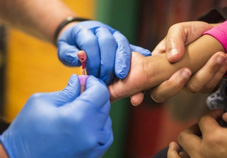
Lead Prevalence in Georgian Children’s Blood will be Tested
By Gvantsa Gabekhadze
Wednesday, September 19
Large-scale survey being launched in Georgia will test the lead prevalence in the blood of the Georgian children and assess the situation of families, children, and women in general.
The lead issue has been particularly speculated after the NDI head in Georgia, Estonian ambassador and several others stated that while in the country lead prevalence in their blood, which may cause serious neurological and other complications, was proved.
The Multiple Indicator Cluster Survey (MICS), one of the largest household surveys worldwide, kicked off in Georgia this week.
It will last for three months and collect high quality, internationally comparable data about the situation of families, children, and women throughout the country. The survey will also check the quality of water and examine lead prevalence in children, UNICEF Georgia reported.
The survey is conducted by the National Statistics Office of Georgia with technical and financial support from UNICEF and the National Center for Disease Control and Public Health. Financial support to the survey is also provided by SIDA, USAID, AFD, SDC, UNFPA, UNDP, WHO, the World Bank, and the Italian Institute of National Health.
“The testing of lead prevalence in children’s blood will involve taking venous blood samples from approximately 1,500 children aged 2-7 throughout the country.
“The samples will be sent to one of the leading European laboratories in Italy. Families will receive lead test results individually and in cases where a high level of lead is identified, they will also get a free consultation from the National Centre for Disease Control,” UNICEF Georgia stated.
The MICS data collection fieldwork begins on 20 September and lasts until 20 December 2018. It will be conducted in over 14,000 households in Tbilisi and the ten regions of Georgia.
UNICEF Georgia says that the results of the survey will help the Government of Georgia with evidence-based decision making and policy planning to improve the life of vulnerable families and children and help achieve the sustainable development goals.
Low-quality constructive materials and coloring matters are regarded as main sources of lead contamination.
It has been stated on social networks that low-quality fuel and air pollution in Georgia are the main reasons of lead contamination, which is being dismissed by the Georgian government.


